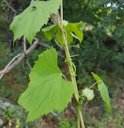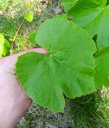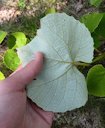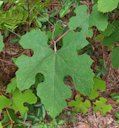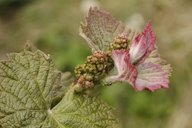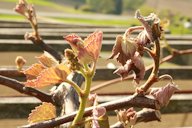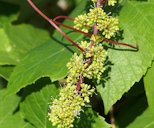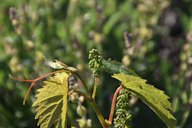| Grape, Bunch - Vitis sp. hybrids | |||||||||||||||||||||||||||||
|---|---|---|---|---|---|---|---|---|---|---|---|---|---|---|---|---|---|---|---|---|---|---|---|---|---|---|---|---|---|
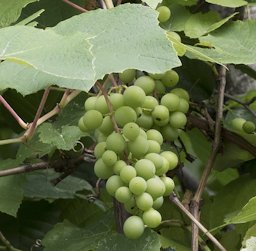 Fig.1  'Isabella' grape, Vitis labrusca, American bunch grape, Espiye , Giresun, Turkey  Fig. 2  Wine Grape V. vinifera, Terras de Bouro, Portugal 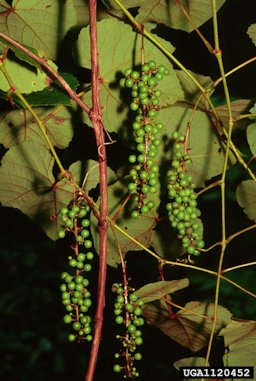 Fig. 3  Summer grape (V. aestivalis) 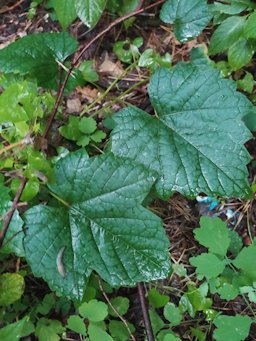 Fig. 4  V. vinifera, Kiev, Ukraine  Fig. 5  Fox Grape V. labrusca, Strafford, Vermont, USA 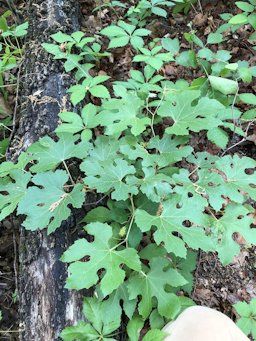 Fig. 6  Summer grape, V. aestivalis, Texas, USA  Fig. 14  Wine Grape V. vinifera, Dions, France 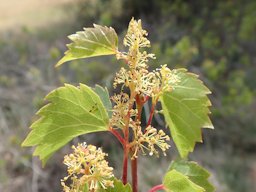 Fig. 15  European bunch grape, V. vinifera, Barcelona, Spain  Fig. 19  European grape, V. vinifera, Ústecký, Czechia 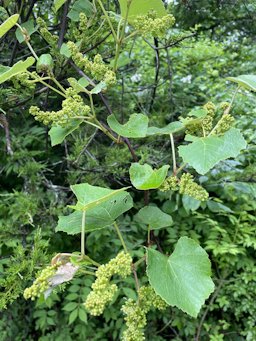 Fig. 20  Fox Grape V. labrusca, Pond State Park, Ridgefield, CT, US 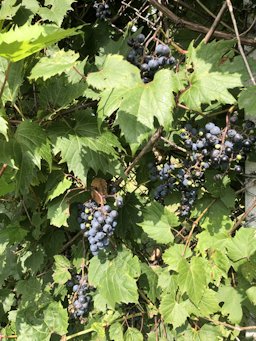 Fig. 21  Fox Grape, V. labrusca, Erie County, US-PA, US 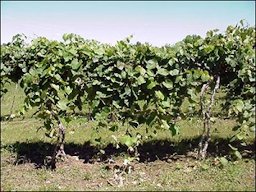 Fig. 26 Grape plant 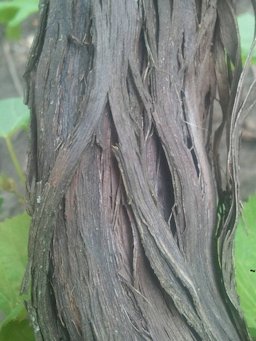 Fig. 27 Wine Grape V. vinifera, Moldova, Transnistria 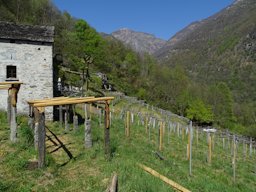 Fig. 28  European grape, V. vinifera, Málaga, España 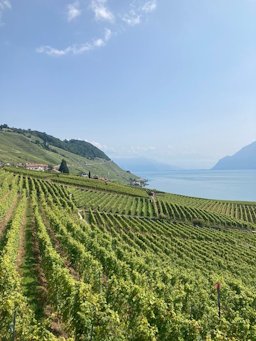 Fig. 29  V. vinifera, Vaud, CH, Switzerland  Fig. 30  Wine Grape V. vinifera, Zamora, Spain  Fig. 31 'Autumn Royal', a new seedless grape V. labrusca |
Scientific
name Vitis sp. hybrids Common names European bunch grape (V. vinifera), American bunch grape (V. labrusca), Summer grape (V. aestivalis) Family Vitacaea (grape family) Origin North America Uses Fresh eaten out of hand; juice, jams and jellies Plant habit Woody vine with tendrils Pruning requirement Done during the dormant season Leaves Usually large; roundish to heart-shaped, often lobed; serrate margins Flowers Inconspicuous; self fertile Fruit May be green, red, purple, or yellow when ripe; round or oval; thin-skinned and juicy; produced on new shoots developing from the previous year's growth Season Late June to late July USDA Nutrient Content pdf Light requirement Full sun Soil tolerances Adapts to a wide range of soils including most of those suited to citrus pH preference 6.0 Drought tolerance Needs water for growth Plant spacing 10 ft (3 m) between rows; 8 ft (2.4 m) between plants Roots Shallow root system Pest resistance Need regular spraying Reading Material The Bunch Grape, University of Florida pdf Commercial Fresh Market, Wine, Juice, and Jelly Grape Cultivars for Florida, University of Florida pdf Home Garden Bunch Grapes, University of Georgia, Cooperative Extension pdf Southern bunch grapes (Vitis sp. hybrids) have been bred for resistance to Pierce's disease. Pierce's disease is caused by a bacterium, Xylella fastidiosa. Most southern bunch grapes require a spray program for fungal diseases, especially during wet growing seasons. Perhaps the most serious disease of bunch grapes is anthracnose (Elsinoe ampelina [deBary] Shear). One advantage of bunch grapes is that they are all self-fruitful and do not require pollinizer rows planted next to them. 6 Bunch grapes were raised in Florida many years ago, but the industry was devastated by Pierce's disease. Pierce's disease is caused by the xylem limited bacterium, Xylella fastidiosa. Leafhoppers that feed on xylem fluid spread the disease from plant to plant. Only with the recent development of Pierce's disease-resistant varieties adapted to Florida's warm humid climate have bunch grapes been grown successfully in Florida. 1 The primary species of bunch grapes are grown in the United States: the European bunch grape (Vitis vinifera), the American bunch grape or Fox grape (V. labrusca) and the Summer grape (V. aestivalis). 2 Among the characteristics of this vine species in contrast to the European wine grape V. vinifera are its "slip-skin" that allows the skin of the grape berries to easily slip off when squeezed, instead of crushing the pulp, and the presence of tendrils on every node of the cane. Another contrast with European vinifera is the characteristic "foxy" musk of V. labrusca, best known to most people through the Concord grape. 3 Unlike vinifera, hybrids and V. labrusca varieties can better withstand the severe continental conditions of eastern North America with severely cold winters and hot, humid summers. (However, labrusca doesn't do quite as well as varieties like V. rotundifolia in the humidity of southeastern US). 3 Botanical Diagram of the Grape Basic Grape Berry Structure, eXtension Foundation Stages of Grape Berry Development, eXtension Foundation Annual Cycle of the Grape Vine, eXtension Foundation Grapevine Structure and Function, Oregon Viticulture pdf Parts of the Grape Vine Part I: Flowers and Fruit, eXtension Foundation Part II: Shoots, eXtension Foundation Part III: Roots, eXtension Foundation Leaves
Fig. 7. Wine grape V. vinifera, California, US Fig. 8. Underside of V. vinifera leaf, Algeria Fig. 9. Wine grape V. vinifera, Central Macedonia, Greece (tendrils) Fig. 10. V. vinifera, Uzhhorods'ka, ZK, Ukraine Fig. 11,12. Fox grape, V. labrusca, Bristol, USA Fig. 13. Summer grape, V. aestivalis, Florida, US Flowers
Fig. 16,17. V. vinifera, emergence of flowers, Poppendorf, Austria Fig. 18. Fox Grape V. labrusca, Cumberland, Fhode Island, USA Fruit
Fig. 22. Wine grape, V. vinifera, Vodice, Croatia Fig. 23. Wine grape, V. vinifera, Nouvelle-Aquitaine, FR Fig. 24. Fox grape, V. labrusca, Martha's Vineyard, Aquinnah, MA, US Fig. 25. Summer grape (V. aestivalis) Varieties The University of Florida's Agricultural Research Center at Leesburg and Apopka has had a breeding program for bunch grapes, resulting in the development of several bunch grape varieties. Resistance to Pierce's disease has been the major selection criterion. Liberty', formerly recommended, has given problems with Pierce's disease and uneven ripening of berries on the bunch. 'Roucaneuf', also formerly recommended, has lacked fruit quality in comparison to the recommended bunch grapes. 'Black Spanish' is resistant to Pierce's disease, although it produces berries with a low sugar:acid ratio. Although 'Orlando Seedless' and 'Norris' are resistant to Pierce's disease, they both can incur berry shattering and are very susceptible to anthracnose. 1 The principal cause of poor results with bunch grapes in Florida is the prevalence of fungal diseases during hot humid growing conditions during the summer. There are only 7 varieties currently recommended, that have Pierce's disease resistance, to do well in Florida. 1 Bunch Grape Varieties, University of Florida Pollination All the varieties are self-fertile so will bear full crops without another variety as pollenizer. 1 Propagation Rooted grape nursery stock is customarily produced from cuttings made in January from 9- or 10-month-old wood. Canes used for hardwood cuttings should be about 12 inches long, with two or more buds, pencil-sized or a little larger in diameter, fairly straight, with green wood throughout their length. Some bunch grape varieties such as ‘Stover’ are more productive when grafted on a rootstock. Although several methods of grafting or budding are possible, the cleft graft on one-year-old rootstocks made either in the nursery or in the field is recommended. 1 'Conquistador', 'Orlando Seedless', 'Black Spanish', and 'Stover' require grafting on 'Tampa' or 'Dog Ridge' rootstocks for satisfactory growth and yields. The other varieties do not require grafting except in areas where the soil pH normally exceeds 7.0. 'Dog Ridge' is the best rootstock to graft them on under alkaline soil conditions. 1 Propagation of Grape Vine Cuttings: A Practical Guide, New Mexico State University pdf Diagram for Grape Propagation, University of Florida MREC/IFAS pdf Grafting Bunch Grapes, University of Florida MREC/IFAS pdf Planting Grapes can adapt to a wide range of soils including most of those suited to citrus culture. Fine sands and upland soils, especially those with underlying clay at about 3 feet, are ideal. Soils less adapted to viticulture are the white sands, e.g., St. Lucie, Leon, St. Johns, and Immokalee. Poorly drained soils such as marl, peat, muck, and peaty muck are not recommended. 1 Transplanting is recommended in late dormancy if the soil moisture is adequate; time of planting will usually be January in south Florida, February in central Florida, and March in north Florida. 1 Improving Size and Quality of Seedless Grapes, New Mexico State University pdf Pruning Pruning is done in Florida during the following dormant periods: (a) south Florida-January; (b) central Florida-January 1 to February 15; and (c) north Florida-January 1 to March 10. 1 If vines are not pruned at all, the number of clusters will increase, but the size of both clusters and berries will decrease so that only stems and cull berries are produced. Further, the length and width of the vines will make them more difficult to harvest or cultivate. 1 Grapevine Pruning Practices, eXtension Foundation Pruning Grapes to the Four-Arm Kniffin System, New Mexico State University pdf Pruning Diagram for Florida Hybrid Bunch Grape Vines, University of Florida, MREC/IFAS pdf Prune Grape Vines for Maximum Yield, University of Florida pdf Pruning the Bearing Vine, University of Georgia, Cooperative Extension Training/Trellis The first year, set a 6.5-foot stake by each plant and tie the stake to the top wire of the trellis. As shoots begin to grow from the plant, select the healthiest shoot and secure it to the stake with string or tape. Remove all other shoots. As the selected shoot grows, it eventually becomes the trunk of the vine. It is important to keep it growing straight up the stake by (a) tying with string as needed for support and (b) removing lateral and base sprouts while they are small. Be sure to leave at least one lateral shoot to grow each way along each wire. 1 Vineyard Trellis Construction, University of Florida, MREC/IFAS pdf Vineyard Trellis Materials, University of Florida, MREC/IFAS pdf Grape Trellis Systems, University of Georgia, Cooperative Extension Trellis End Post Assembly Designs for Vineyards, New Mexico State University pdf Training Young Vines, University of Georgia, Cooperative Extension Fertilizing The first year, soon after spring growth begins, apply 1/4 pound of 6-6-6 or 8-8-8 with 20 to 30% of the nitrogen from natural organic sources, in two lateral bands 1 foot away from the plant. Repeat this application in May, June, and early September. The second year apply 1 pound of the same mixture in February, May, and just after harvest. Rates can be increased in future years but should not exceed 4 pounds per vine per year. 1 Irrigation Many first-year grape plants have died in Florida vineyards from lack of soil moisture. Water should be provided when needed; even older plants will respond to irrigation. Applications of 1 to 1.5 inches every week during April and May will be sufficient for old vines, but young vines planted in sandy soil may need irrigation every two or three days. 1 Pest Page Diseases Page Food Uses Out of hand as they come off the vine. They can be made into jelly, jam, wine, raisins, fruit leather; the seeds can be pressed for oil and the young leaves boiled and eaten. The leaves of the hybrids are preferred to the muscadines. Muscadines can be high in acid so when crushing to make jelly don’t use your hand. Oh, and the seeds can be used to make grappa. 5 Winemaking at Home, University of Georgia, Cooperative Extension pdf General According to University of California, Davis viticulture expert A. J. Winkler, outside of the vinifera Muscat family of grapes, V. labrusca varieties have the most pronounced aromas among wine grape varieties. The description of "foxy", not derived from the animal, serves as a catch-all term to describe the unique, earthy and sweet muskiness that can be perceived in fresh Concord grapes as well as grape juice made from Concord and other labrusca varieties like Niagara. In the 1920s, scientists were able to isolate the aroma compound responsible for the "foxy" musk as methyl anthranilate. 4 Other Edible Vitis species: Muscadine Grape, V. rotundifolia Further Reading History of Grapes in Florida and Grape Pioneers, University of Florida pdf TimeLine: Grapes in Florida, University of Florida pdf Growing Grapes in Hawai'i, University of Hawai'i at Mãnoa pdf Grapes of Path, Eat The Weeds Florida Grape Growers Association ext. link Grape Botanical Art List of Growers and Vendors |
||||||||||||||||||||||||||||
| Bibliography 1 Andersen, Peter C. "The Bunch Grape." Horticultural Sciences Dept., UF/IFAS Extension, HS-17A, Original pub. Aug. 2001, Revised Apr. 2014, and May 2017, Reviewed June 2020, AskIFAS, edis.ifas.ufl.edu/mg105. Accessed 17 Sept. 2018, 28 Sept. 2020. 2 Krewer, Gerard. "Home Garden Bunch Grapes."University of Georgia, Cooperative Extension, Published with Major Revisions 15 Oct. 2006, Minor Revisions 5 Jan. 2010, Full Review 1 Jan. 2014, Minor Revisions 13 June 2017, extension.uga.edu/publications/detail.html?number=B807&title=Home%20Garden%20Bunch%20Grapes. Accessed 10 Oct. 2018. 3 Robinson, Jancis. "The Oxford Companion to Wine." Wikipedia, Oxford University Press, third edition, 2006, wikipedia.org. Accessed 15 July 2016. 4 Winkler A. J., et al. "General Viticulture." Wikipedia, University of California Press, 2nd edition, 1974, wikipedia.org. Accessed 15 July 2016. 5 Deane, Green. "Grapes of Path." Eat the Weeds and other things, too, www.eattheweeds.com. Accessed 19 July 2016. 6 Breman, J., et al. "Commercial Fresh Market, Wine, Juice, and Jelly Grape Cultivars for Florida." Horticultural Sciences Dept., UF/IFAS Extension, Original pub. Dec.2008, Revised June 2015, June 2018, and Nov. 2022, AskIFAS, doi.org/10.32473/edis-hs401-2022, edis.ifas.ufl.edu/publication/HS401. Accessed 1 June 2023. Photographs Fig. 1 Cebeci, Zeynel. "'Isabella' grapevine (Vitis labrusca). Espiye , Giresun, Turkey." Wikimedia Commons, 1 Aug. 2020, (CC BY-SA 4.0), Image cropped, commons.wikimedia.org/wiki/File:Vitis_labrusca_-_Isabella_grapevine_02.jpg. Accessed 4 June 2023. Fig. 2 dunwoodylabs. "Wine Grape Vitis vinifera, Terras de Bouro, Portugal." iNaturalist, Research Grade, 1 July 2022,(CC BY-NC 4.0), www.inaturalist.org/observations/124247070. Accessed 3 June 2023. Fig. 3,25 Miller, James H., and Ted Bodner. "Summer grape (Vitis aestivalis) fruit." Southern Weed Science Society, no. 1120453, 1 Feb.2018, Bugwood.org, (CC BY 3.0), commons.wikimedia.org/File:Vitis_aestivalis_1120453.jpg. Accessed 5 June 2023. Fig. 4 churilovam. "Wine Grape Vitis vinifera, Kiev, Ukraine." iNaturalist, Research Grade, 1 Aug. 2022,(CC BY-NC 4.0), www.inaturalist.org/observations/129033882. Accessed 3 June 2023. Fig. 5 Smith , Levi. "Fox Grape Vitis labrusca, Strafford, Vermont, USA." iNaturalist, Research Grade, 6 Sept. 2022,(CC BY-NC 4.0), www.inaturalist.org/observations/133968383. Accessed 5 June 2023. Fig. 6 Kieschnick, Sam. "Summer grape, Vitis aestivalis, Texas, USA." iNaturalist, Research Grade, 2 May 2022,(CC BY-NC 4.0), Image cropped, www.inaturalist.org/observations/114794921. Accessed 5 June 2023. Fig. 7 resholes. "Wine Grape Vitis vinifera, California, US." iNaturalist, Research Grade, Apr. 2020,(CC BY-NC 4.0), www.inaturalist.org/observations/42976499. Accessed 3 June 2023. Fig. 8 Chetibi, Mehdi. "Wine Grape Vitis vinifera, Algeria." iNaturalist, Research Grade, Sept. 2021,(CC BY-NC 4.0), www.inaturalist.org/observations/94099295. Accessed 3 June 2023. Fig. 9 a_emmerson. "Wine Grape Vitis vinifera, Central Macedonia, Greece." iNaturalist, Research Grade, 26 June 2022,(CC BY-NC 4.0), www.inaturalist.org/observations/123545064. Accessed 3 June 2023. Fig. 10 Koniakin, Serhii. "Wine Grape Vitis vinifera, Uzhhorods'ka, ZK, Ukraine." iNaturalist, Research Grade, 18 Sept. 2022,(CC BY-NC 4.0), www.inaturalist.org/observations/135519981. Accessed 4 June 2023. Fig. 11,12 Tyler. "Fox Grape Vitis labrusca, Bristol, USA." iNaturalist, Research Grade, 22 May 2023,(CC BY-NC 4.0), www.inaturalist.org/observations/163194332. Accessed 5 June 2023. Fig. 13 jebecky. "Summer grape, Vitis aestivalis, Florida, US." iNaturalist, Research Grade, May 2023,(CC BY-NC 4.0), Image cropped, www.inaturalist.org/observations/163726790. Accessed 5 June 2023. Fig. 14 jackyserody. "Wine Grape Vitis vinifera, Dions, France." iNaturalist, Research Grade, 19 May 2020,(CC BY-NC 4.0), www.inaturalist.org/observations/46460161. Accessed 3 June 2023. Fig. 15 Joan. "Wine Grape Vitis vinifera, Barcelona, Spain." iNaturalist, Research Grade, 21 May 2023,(CC BY-NC 4.0), www.inaturalist.org/observations/162904645. Accessed 3 June 2023. Fig. 16 Schmid, Sepp. "Wine Grape Vitis vinifera, Poppendorf, Austria." iNaturalist, Research Grade, 4 May 2021,(CC BY-NC 4.0), www.inaturalist.org/observations/115389170. Accessed 3 June 2023. Fig. 17 Schmid, Sepp. "Wine Grape Vitis vinifera, Poppendorf, Austria." iNaturalist, Research Grade, 2 May 2021,(CC BY-NC 4.0), www.inaturalist.org/observations/76590214. Accessed 3 June 2023. Fig. 18 doug_mcgrady. "Fox Grape Vitis labrusca, Cumberland, Rhode Island, USA." iNaturalist, Research Grade, 2 Jan. 2023,(CC BY-NC 4.0), www.inaturalist.org/observations/145729006. Accessed 5 June 2023. Fig. 19 ditakyralova. "Wine Grape Vitis vinifera, Ústecký, Czechia." iNaturalist, Research Grade, 27 Mar. 2023,(CC BY-NC 4.0), www.inaturalist.org/observations/152504495. Accessed 4 June 2023. Fig. 20 paulshotton. "Fox Grape Vitis labrusca, Pond State Park, Ridgefield, CT, US." iNaturalist, Research Grade, 2 June 2022,(CC BY-NC 4.0), www.inaturalist.org/observations/119866230. Accessed 3 June 2023. Fig. 21 ryanterhaar16. "Fox Grape Vitis labrusca, Erie County, US-PA, US." iNaturalist, Research Grade, 18 Sept. 2020,(CC BY-NC 4.0), www.inaturalist.org/observations/59960676. Accessed 5 June 2023. Fig. 22 Cato, Sebastian. "Wine Grape Vitis vinifera, Vodice, Croatia." iNaturalist, Research Grade, 9 May 2021,(CC BY-NC 4.0), www.inaturalist.org/observations/78154664. Accessed 3 June 2023. Fig. 23 benboss. "Wine Grape Vitis vinifera, Nouvelle-Aquitaine, FR." iNaturalist, Research Grade, 18 Sept. 2022,(CC BY-NC 4.0), www.inaturalist.org/observations/135552087. Accessed 3 June 2023. Fig. 24 junglemannick. "Fox Grape Vitis labrusca, Martha's Vineyard, Aquinnah, MA, US." iNaturalist, Research Grade, 3 Oct. 2021,(CC BY-NC 4.0), www.inaturalist.org/observations/97078956. Accessed 5 June 2023. Fig. 26 "Grape, Bunch." Gardening Solutions, Florida Plant Identification, gardeningsolutions.ifas.ufl.edu. Accessed 8 Nov. 2014. Fig. 27 Ильина Сарэу. "Wine Grape Vitis vinifera, Moldova, Transnistria." iNaturalist, Research Grade, 26 July 2020,(CC BY-NC 4.0), www.inaturalist.org/observations/54382200. Accessed 4 June 2023. Fig. 28 joseronchel. "Wine Grape Vitis vinifera, Málaga, España." iNaturalist, Research Grade, 17 Sept. 2022,(CC BY-NC 4.0), www.inaturalist.org/observations/135366133. Accessed 4 June 2023. Fig. 29 bandafj. "Wine Grape Vitis vinifera, Vaud, CH, Switzerland." iNaturalist, Research Grade, 24 Aug. 2021,(CC BY-NC 4.0), www.inaturalist.org/observations/135366133. Accessed 4 June 2023. Fig. 30 aristotelis. "Wine Grape Vitis vinifera, Zamora, Spain." iNaturalist, Research Grade, 3 July 2021,(CC BY-NC 4.0), www.inaturalist.org/observations/85508566. Accessed 4 June 2023. Fig. 31 Nichols, Bob. "Autumn Royal, a new seedless grape." Agricultural Research Service, United States Department of Agriculture, USDA ARS, Wikimedia Commons, before 12 August 2005, Public Domain, commons.wikimedia.org/wiki/File:Autumn_Royal_grapes.jpg. Accessed 4 June 2023. Published Feb. 2013 LR. Last update 1 June 2023 LR |
|||||||||||||||||||||||||||||


